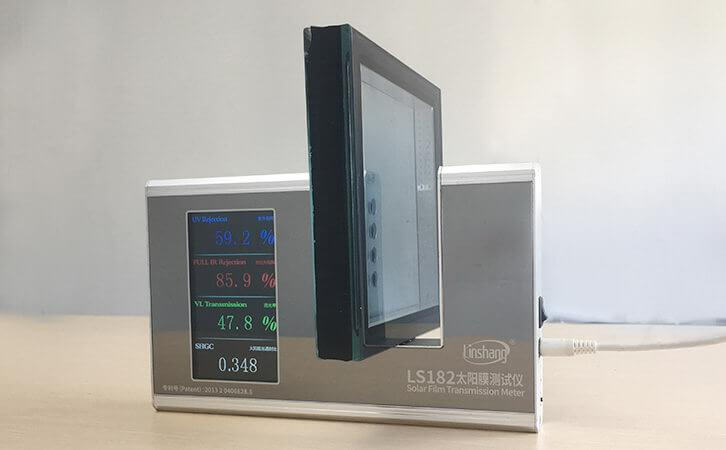Thermal Insulation Effect of Stick-film and Coated glass | Tint Tester
In recent years, many new construction membrane and coating processes have emerged. The door and window glass industry has gradually opened a new chapter in energy conservation. By coating the glass or applying a heat-resistant coating to form a coating on the glass surface, the original properties of the glass can be modified. For buildings with glass installed, such modifications can save a lot of building energy consumption. The thermal insulation performance of stick-film and coated glass can be measured using a professional tint tester.
Some experts point out that the energy consumption of buildings in the real estate industry is very alarming, even exceeding 30% of the total energy consumption of society. Among them, traditional non-energy-saving buildings generate more than half of the energy consumption of buildings, while glass alone accounts for 70%. Therefore, it is necessary to achieve energy saving effects by improving architectural glass.
The energy-saving transformation of door and window glass that has appeared in recent years can be more effective to achieve the purpose of energy saving. Such transformation mainly refers to applying a heat-shielding film to the window glass or architectural glass or applying a layer of heat-insulating coating to the glass. The surface forms a heat-resistant coating. In the hot period, the stick-film or coating glass can block most of the external heat, which can save the energy consumption of indoor air conditioning. In the cold period, the stick-film or coating glass can keep warm and reduce the energy consumption of indoor heating and air conditioning. In this way, the energy saving effect can be achieved without replacing the existing doors and windows. This application has been widely recognized. The tint tester is used to detect the heat insulation performance of the glass after the film is applied or the surface is formed with a coating film.
The institute has done a lot of experiments to verify the energy-saving performance of film and stick-film glass. According to experiments, if a 16-square-meter room door and window glass film is applied, one day can save electricity by 0.24 degrees. Calculated according to the total construction area of 450 million square meters in Shenzhen's property management and the occupancy rate of 50% of the residential area, the living area can reach 225 million square meters. If 50% of the glass is coated or coated film and then calculated according to 0.626 RMB / kWh (the average price of electricity used by residents in Guangdong province), then the electricity cost that can be saved in a day is
225000000 × 50% ÷ 16 × 0.24 × 0.626 = 1056375 yuan ≈ 1.056 million RMB
From this we can easily find that the energy saving benefits brought by the glass after sticking film are very objective, so the application of energy-saving building materials is also very necessary. As a building film and coating manufacturer and major building glass manufacturers, for glass installation projects, it is essential to use a professional tint testerto confirm the energy-saving effect of the film and coating.
In recent years, the country has also paid more and more attention to energy-saving work in the construction industry. Energy-saving building materials such as architectural films and coating films have ushered in huge market opportunities. As a tint tester manufacturer, Linshang Technology has also continuously improved its own research and development level. Strive to improve the professionalism of glass inspection.
- Linshang Insulated Glass Unit Measuring Tools
- Spectacle lens anti-blue light detection---blue-violet light transmittance meter
- Measurement of Optical Density
- Difference of LS116 Transmission & LS117 OD Meter
- Difference between LS116 and LS117 Light Transmittance Meter
- What’s the Difference Between Point Light and Parallel Light Transmittance Meter
